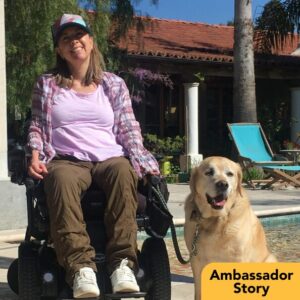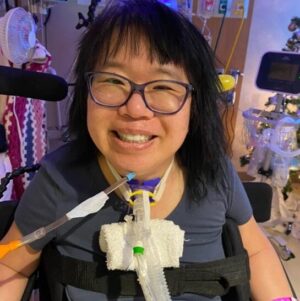As Mobility Awareness Month continues, we look at how physical therapy can help to boost your body and mind following a spinal cord injury.
Robert Mudge became a C5/C6 quadriplegic after an accident in 2001. Physical therapy and adaptive athletics have helped Robert to maintain a positive mindset and keep his body strong.
Robert, did your injury influence your interests and hobbies?
Growing up, I tried any sport or activity that grabbed my interest thanks to my supportive parents, including baseball, football, working out, bowling, BMX racing, surfing and fishing.
After my injury, I thought all of these hobbies and others were lost to me. However, over the years I’ve learned that I can still take part in similar sports and activities, just in a different manner. It wasn’t until 2007 that I discovered I could play a team sport again: quad rugby, with the Brooks Bandits in Jacksonville, Florida. In order to surf, instead of standing on the board I can lie on my stomach on the board, propped up on my elbows.
There are countless sports that can be played with a little adaptation: playing pool, swimming, table tennis, tennis, fishing, cycling, bowling, basketball, hockey…the list goes on.
Were you hesitant to get involved in adaptive athletics?
I was a little apprehensive at first when I gave these new activities a try, because I knew I wouldn’t be able to engage at the same caliber I was used to. I tried not to let that fear limit me or prevent the growth that I could experience by participating.
What helps you maintain your peace-of-mind?
Hope and faith both help me keep my sanity: hope that I can get better, and faith that I will. There are no guarantees that either will happen, but I believe both of those forces are very powerful. Combining those elements with relentless effort, goals, support from family and friends and a determination never to give up helped me get to where I am today.
How do you cope with injury anniversaries?
When I am faced with injury anniversaries or times when I feel like my progress is stagnant, I reflect back on how far I’ve come and celebrate the things I CAN do rather than harping on the things I still can’t do.
What did physical therapy do for you?
Thanks to a HelpHOPELive fundraiser, I was able to afford my first trip to Project Walk in Carlsbad, California. I realized I had found what I was looking for. It was so refreshing to be treated as a ‘normal’ person and to be moved and rehabilitated outside of my wheelchair.
[Project Walk] had me doing things I knew I couldn’t do, and that approach was frustrating at first. The staff recognized that one day, with repetitive training, I could get there. That’s exactly what happened over the years. I’ve continued working on rehabilitation in my home gym and at Project Walk Orlando year-round.
Do you find your hobbies therapeutic?
I think moving in general is therapeutic. Whether you’re engaging your mind or your body, staying active and in motion is a great thing. Just like they say, things in motion stay in motion.
Brian Keeter was left paralyzed from the waist down after a near-fatal car accident. Brian works out and advocates for spinal cord injury research to stay perpetually engaged in recovery.
Brian, did your injury change your participation in sports?
I played sports my entire life, and even played basketball in college. Leading up the accident, I had been playing in recreational league game with my friends and I played basketball several times every week, including Saturday mornings at 7 am. I have spent a lot of time working with exercise specialists to get stronger, stay fit and maximize my physical functioning. I’ve stayed on top of the research being done to find cures or improve rehabilitative therapies. I started my own foundation to identify and support spinal cord injury research.
What do you like about working out?
I try to do all I can do to maximize what I have and prepare my body for the treatments and therapies that will be available in the future. Working out is therapeutic: you get to see that there are others dealing with the same or similar circumstances and, in some cases, worse circumstances. When I work out, I feel like I am physically working to do something about my physical limitations.
I have gotten stronger, particularly in my upper body and core, and I have gained movement in my hip flexors and gluts. My body feels better after working out because the exercises loosen me up and let me stretch out. When I have been traveling or have otherwise been unable to work out for a few days, I experience more pain, most likely because of increased tightness in my body.
Celebrate Mobility Awareness Month with us! Share your story on Facebook or on Twitter.











